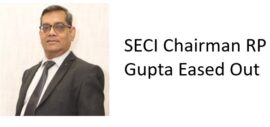Highlights :
- REI 2021 ended with a clear message that make in India had finally worked for the sector.
- From cells to modules to inverters and key floating solar components, Indian firms are rising to the challenge.

At the recently concluded REI 2021, it was an impressive show of strength for the sector, despite the usual hits and misses one would expect in a year like this. So while the Chinese presence was on the lower side, especially Chinese senior management from the top firms like Longi Solar, Jinko, Huawei etc, the firms took care to maintain a presence with their top India executives.
Thus, straightaway, a stronger, or more noticeable distributor presence was discernible, as this allowed multiple brands to maintain visibility. From global distributors like Wattcraft, to domestic players, some of the biggest marked their presence here.
Top Inverter firms like Solis Ginlong, which did participate, found themselves with the largest presence, and enjoying the limelight.
After multiple meetings, interactions with visitors and our own analysis, we these 5 trends well worth recounting here.
- Solar Manufacturing In India is finally here with miles to go. Be it Premier Energies, Goldi Solar, the Jakson Group, or Waaree Energies, Vikram Solar and Adani Solar and more, Indian firms expanding their manufacturing facilities for cells and modules were in the limelight, with most of these expansions done or well on their way. That means a significant amount of fresh supply to the market by March 2022. As you would expect, everyone was gung ho about the future, and working on the best strategy to market the higher production. Technology providers and enablers like the Bergen group do warn however, about the challenges that lie ahead, notably the continued lack of control over wafer prices, even whole the extra cell manufacturing capacity was welcome.
Importantly, we heard enough indications from firms who are beyond the point of consideration, as far as establishing manufacturing facilities in India goes, especially on the inverter front. Besides the 20 percent import duty, key firms finally believe the market offers the visibility and stability to make the investment worthwhile.
Even in inverters, where Indian-owned manufacturing has struggled, it was good to see local firms like Pyramid technologies make their presence felt, generating high interest among visitors.
Even in Floating solar, it was a pleasant surprise to see Indian brands like Floatex make a strong impact, with a project pipeline of over 2000 MW, and some of the largest projects commissioned by them recently. - Cost Increases Are Hurting. Almost every developer and manufacturer we met couldn’t help mentioning the 500-600% hike in container costs over the past year, which are finally beginning to bite. From a share of less than 1.5% of total costs, freight costs have become a significant pain point, and everyone would like to see a return to normalcy, without holding out any hope of when they hope to see it. Add to that the increase in prices of other key inputs like wafers, solar glass and of course cells, and it does look like solar power bids of Rs 2 or under as we saw earlier this year, could be history for a while. Without discounting the ability of firms to surprise of course .
- Manufacturers Versus Developers, the communication gap: We couldn’t help but notice the surprise, to outright bewilderment of manufacturers when it came to discussing bid prices at recent solar auctions. Most expressed surprise, and some were adamant that developer assumptions on module prices have been too optimistic at 14-15 cents per watt possibly. That could indicate some very tough negotiations ahead for the sector, as developers try and protect their margins, and manufacturers do everything to ensure it is not done at their expense. Irrespective of all that, it does seem that we have seen the last of bids at sub Rs 2 levels, and most people we spoke to indicated that workable bids would need to be in the Rs 2.40 to Rs 2.65 range going ahead.
- Storage Is Here, and Set to Grow By 2023-24: While the obvious sign was the plethora of lithium ion battery manufacturers who had set up stall, real storage interest could also be seen from the Hybrid and storage inverters showcased by leading purveyors like Solis and Sungrow. Visitors and sellers alike believe storage’s time will come shortly, with the former looking for just one more significant price cut of 15-20% to get moving. Inverter Sellers on the other hand claim they have enough demand at present price levels, and can afford to build better manufacturing competencies and scale over the coming 24 months before dropping prices in a big way.
- Interest in Solar Is Still growing: Saving the best for the last, we were stuck by the number of visitors this time who had very specific queries, and had come armed with a certain level of information. So be it the temple owner from Maharashtra who was keen on a quality off grid solution, to the school principal looking to reduce costs long term with a rooftop net metering option for at least 200 KW, or the corporate representatives here to get a first hand perspective on costs and more for their captive power, the visitor queries were earnest and serious. And we are betting, will see some quick conversions over the coming weeks and months. Besides that, the sheer number of visitors surprised many, especially from day 2 onwards. Considering the stricter entry norms and precautions taken due to Covid related SPO’s, this was indeed a very positive sign for the sector, besides making the organisers, Informa Markets very happy we assume.


























